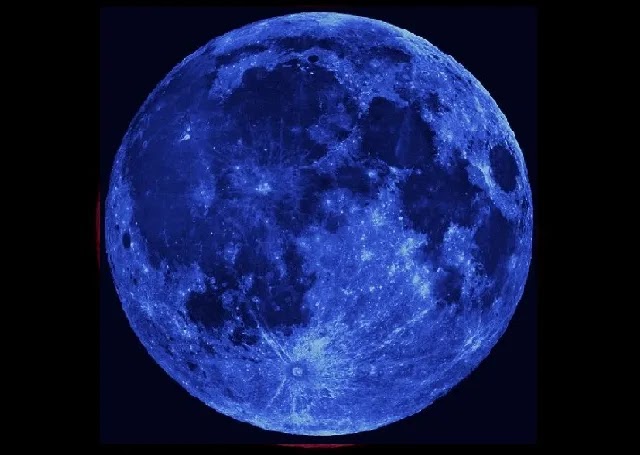MIAMI, Florida – The August 2024 Full Moon is a Blue Moon and Supermoon that will occur on Monday, August 19, 2024, beginning with a moonrise over Florida’s east coast at 8:09 p.m. Eastern Daylight Time (with a few minutes of variation depending on your exact location).
The Full Moon will technically be 99.4% full at 2:26 p.m. Eastern Daylight Time on August 19, according to the U.S. Naval Observatory.
When is the best time to watch the August 2024 Blue Supermoon?
Low hanging moons near the horizon appear larger to humans.
So, the Blue Super Moon will appear biggest to the naked eye on the U.S east coast during and just after the moonrise around 8 p.m. Eastern
Daylight Time.
What is a Super Moon?
According to NASA, a Super Moon occurs because the Moon is in an elliptical orbit around the Earth.
When the Moon is closest, it is at its orbital perigee, which is why a Super Moon is also known as a Perigee Moon.
At its closest point, the full moon can appear up to 14 percent bigger and 30 percent brighter than the faintest Moon of the year, which occurs when it’s farthest from Earth in its orbit.
A
full moon at its closest point to Earth definitely will be big and
bright. But it won’t look much, if any, different than a “normal” full
moon and will not have any readily observable effect on our planet
except perhaps slightly higher tides.
How often is a Blue Moon?
Blue Moons occur when there is a second full moon in a calendar month or when a season has four full moons.
Full moons are separated by 29.5 days but seasons are 88 to 92 days long – so it is possible to fit four full moons into a single season. This happens just over two-and-a-half years, on average.
When there are four full moons in a season, the third full moon is considered a Blue Moon.
This is why the phrase “Once in a Blue Moon” is commonly known to mean something rare and offbeat because of the rare occurrence of a Blue Moon.
Will the 2024 Super Blue Blood Moon look blue?
The date of a full moon doesn’t affect the full moon’s color. The Full Moon on Monday, August 19, 2024, will appear pearly-gray to most locations on Earth before and after the lunar eclipse.
According to NASA, the key to a moon appearing blue is to have lots of particles slightly wider than the wavelength of red light (0.7 micron) and no other sizes present in the air. This is rare, but volcanoes sometimes produce such clouds, as do forest fires.
Humans saw blue moons almost every night when the Krakatoa volcano exploded in 1883 with the force of a 100-megaton nuclear bomb. Plumes of ash rose to the very top of Earth’s atmosphere.
Some of those ash-clouds were filled with particles about 1 micron wide – just the right size to strongly scatter red light while allowing other colors to pass.
White moonbeams shining through the clouds emerged blue, and sometimes green.
People also saw blue-colored Moons in 1983 after the eruption of the El
Chichon volcano in Mexico. And there are reports of blue Moons caused by
Mt. St. Helens in 1980 and Mount Pinatubo in 1991.
What is the Full Moon In August Called?
A Sturgeon Moon. Native American tribes that fished for sturgeon in the U.S. Great Lakes gave the August full moon this name, according to the Farmer’s Almanac.
Full Moon High Tide
For those planning to walk, bike, or run along the beach in Florida, this Full Moon brings along with it a 4 ft. + Atlantic Ocean high tide on the east coast and a 2 ft. + high tide on Florida’s Gulf Coast.

